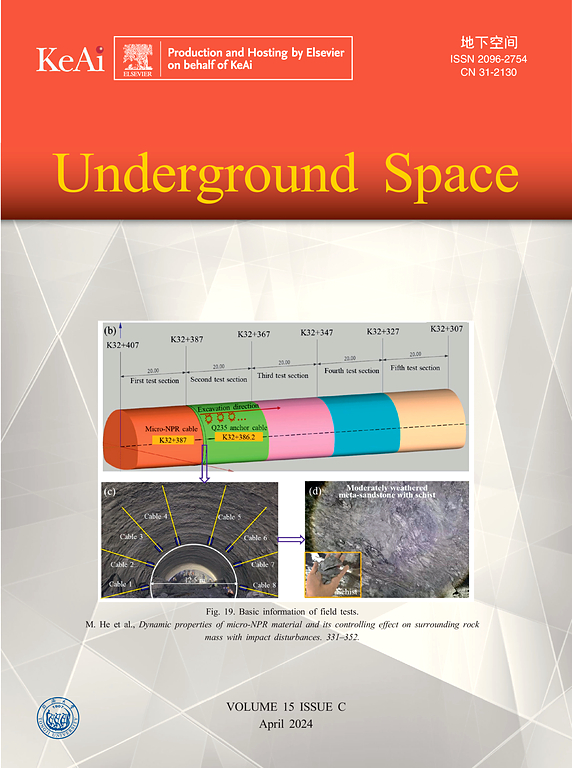Monitoring and strengthening of prestressed concrete cylinder pipes based on distributed acoustic sensing and iron-based shape memory alloys
IF 8.3
1区 工程技术
Q1 ENGINEERING, CIVIL
引用次数: 0
Abstract
This paper proposes an integrated system for monitoring and strengthening the prestressed concrete cylinder pipe (PCCP) with broken wires, which is based on distributed acoustic sensing (DAS) and self-prestressing iron-based shape memory alloy (Fe-SMA). This system was evaluated in a full-scale study on a PCCP with an inner diameter of 1400 mm and a length of 6000 mm. Firstly, the wire breakage signals were monitored by the DAS system. After that, the PCCP with broken wires were strengthened by Fe-SMA bars, and the mechanical properties were tested. The parameters such as different wire breakage ratios and self-prestressing degrees of Fe-SMA bars were also studied. The results show that the DAS system can identify the time and location of wire breakage; the wire breakage signal is characterized by high amplitude and short duration. After being prestressed with Fe-SMA bars, both the width and length of the main crack, as well as the strains in the concrete, mortar coating, and prestressed steel wires, significantly decreased. Additionally, the higher activation temperature of Fe-SMA bars can effectively offset the negative impact caused by the wire breakage development of PCCP. Combined Fe-SMA with the DAS monitoring system, it enables precise positioning and efficient strengthening of in-service PCCP with broken wires.
基于分布声传感和铁基形状记忆合金的预应力混凝土圆柱形管监测与加固
提出了一种基于分布式声传感(DAS)和自预应力铁基形状记忆合金(Fe-SMA)的预应力混凝土圆柱管断丝监测与加固综合系统。该系统在内径为1400 mm,长度为6000 mm的PCCP上进行了全面研究。首先,利用DAS系统对断线信号进行监测。然后用Fe-SMA棒对断线PCCP进行强化,并对其力学性能进行测试。并对不同断丝率和自预应力程度等参数进行了研究。结果表明,该系统能够准确识别断线的时间和位置;断线信号具有振幅大、持续时间短的特点。经Fe-SMA钢筋预应力后,主裂缝的宽度和长度以及混凝土、砂浆涂层和预应力钢丝中的应变均显著减小。此外,Fe-SMA棒的较高活化温度可以有效抵消PCCP断丝发展带来的负面影响。将Fe-SMA与DAS监测系统相结合,可以对断线的在用PCCP进行精确定位和有效强化。
本文章由计算机程序翻译,如有差异,请以英文原文为准。
求助全文
约1分钟内获得全文
求助全文
来源期刊

Underground Space
ENGINEERING, CIVIL-
CiteScore
10.20
自引率
14.10%
发文量
71
审稿时长
63 days
期刊介绍:
Underground Space is an open access international journal without article processing charges (APC) committed to serving as a scientific forum for researchers and practitioners in the field of underground engineering. The journal welcomes manuscripts that deal with original theories, methods, technologies, and important applications throughout the life-cycle of underground projects, including planning, design, operation and maintenance, disaster prevention, and demolition. The journal is particularly interested in manuscripts related to the latest development of smart underground engineering from the perspectives of resilience, resources saving, environmental friendliness, humanity, and artificial intelligence. The manuscripts are expected to have significant innovation and potential impact in the field of underground engineering, and should have clear association with or application in underground projects.
 求助内容:
求助内容: 应助结果提醒方式:
应助结果提醒方式:


